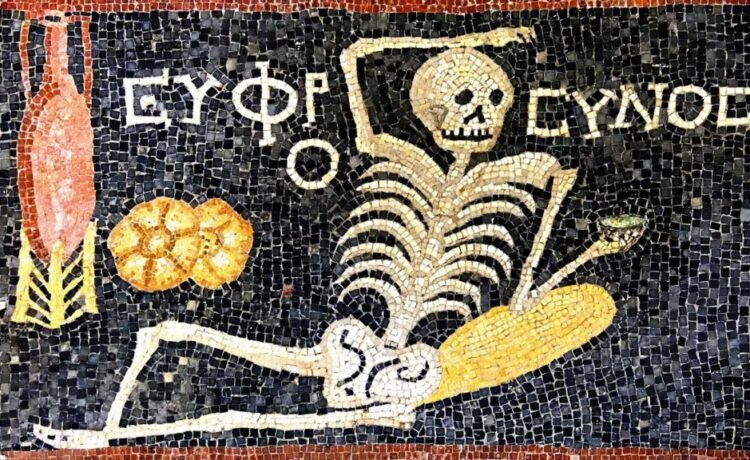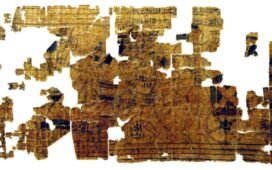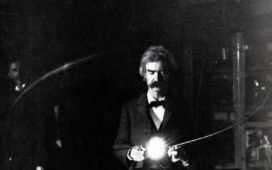The expression “YOLO” may now be just passé enough to require explanation. It stands, as only some of us would try to deny remembering, for “You only live once,” a sentiment that reflects an eternal truth. Some bodies of religious belief don’t strictly agree with it, of course, but that was also true 24 centuries ago, when an unknown artist created the so-called “YOLO mosaic” that was unearthed in Southern Turkey in the twenty-tens. That artifact, whose depiction of a wine-drinking skeleton living it up even in death has delighted thousands upon thousands of viewers on the internet, is at the center of the new Hochelaga video above.
To the side of that merry set of bones is the Greek text “ΕΥΦΡΟΣΥΝΟΣ,” often translated as “Be cheerful and live your life.” As Hochelaga creator Tommie Trelawny points out, that’s a somewhat loose interpretation, since the word “roughly means ‘joyful-minded,’ or simply ‘cheerful.’ ” A more important element not often taken into consideration is the mosaic’s context.
It was discovered during the excavation of a third-century Greco-Roman villa, where it constituted one end of a dining-room triptych. In the middle was a scene, a trope in comedies of the time, of a toga-clad young “gatecrasher” running in hopes of a free dinner. On the other end is a mostly destroyed image of a type of figure known as “the African fisherman.”
Taken together, this domestic artwork could reflect the Epicurean teaching that “life should be about pursuing happiness and enjoying the simple pleasures while you still can.” But if the “cheerful skeleton,” as Trelawny calls it, draws attention from the rest of the triptych, that speaks to its symbolic power across the ages. Common not only in ancient Rome, the symbolic figure also makes vivid appearances in medieval art (especially during the time of the Black Death), Renaissance portraiture, the Día de Muertos-ready drawings of José Guadalupe Posada, and even Disney cartoons like The Skeleton Dance. As long as death remains undefeated, each era needs its own memento mori, and the cheerful skeleton, in all its paradoxical appeal, will no doubt keep turning up to the job — sometimes with a drink in hand.
Related Content:
Celebrate The Day of the Dead with The Classic Skeleton Art of José Guadalupe Posada
The Skeleton Dance, Voted the 18th Best Cartoon of All Time, Is Now in the Public Domain (1929)
Based in Seoul, Colin Marshall writes and broadcasts on cities, language, and culture. His projects include the Substack newsletter Books on Cities and the book The Stateless City: a Walk through 21st-Century Los Angeles. Follow him on the social network formerly known as Twitter at @colinmarshall.















